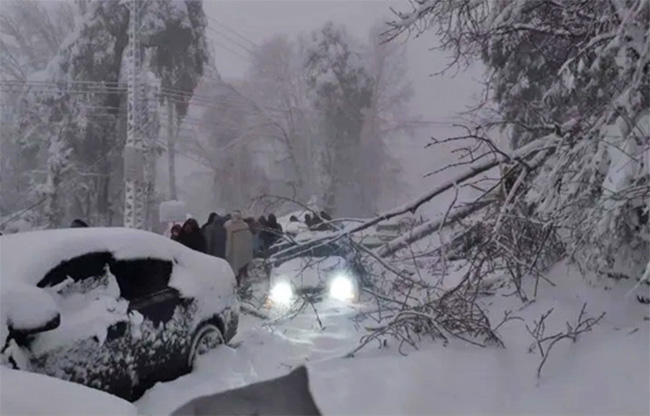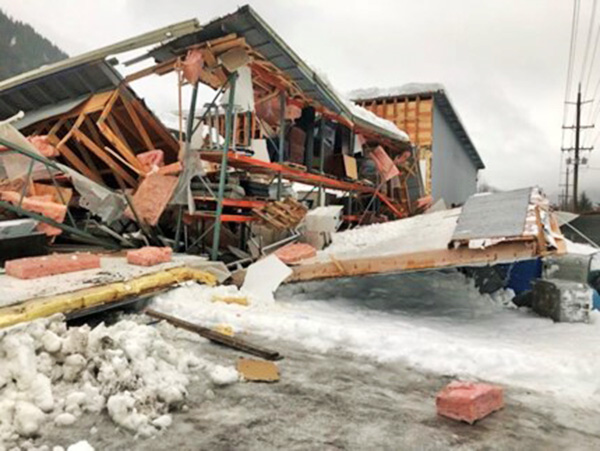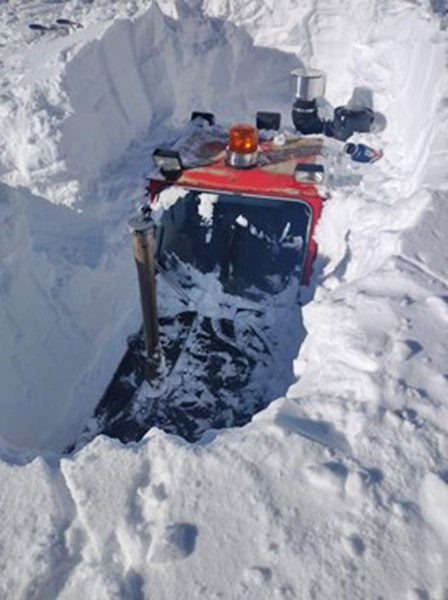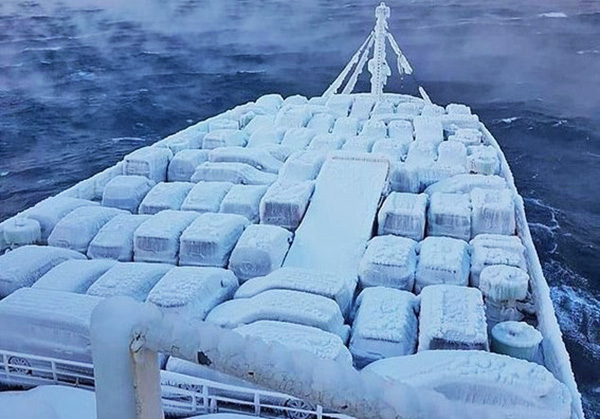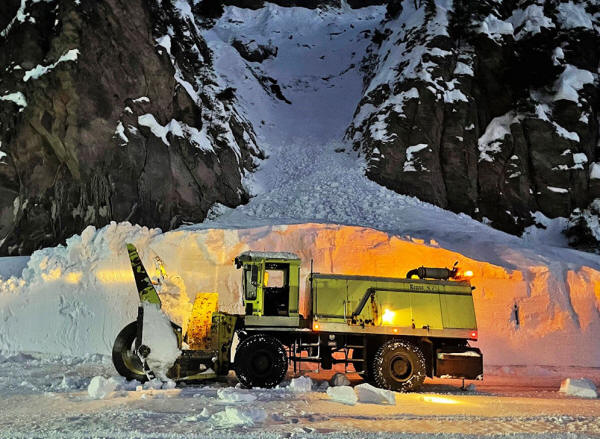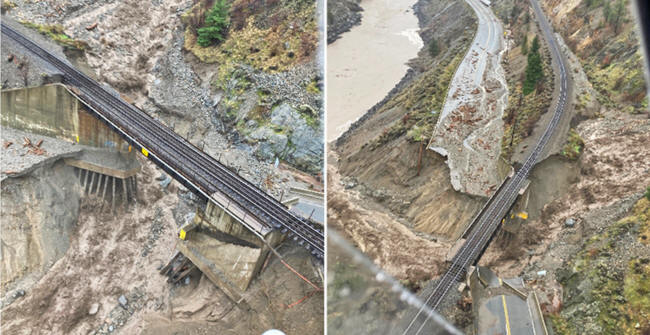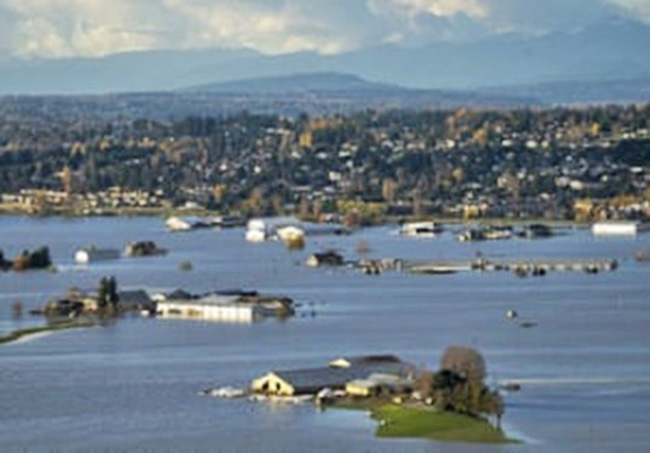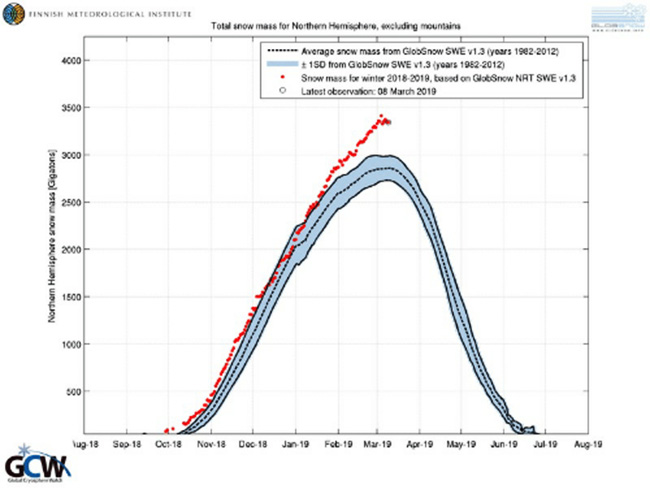|
by ColdClimate Admin
January
26, 2022
That was last week...
This week is more of the
same but with incredible cold added. In an elevated valley of
northeast West Virginia on Saturday morning, 125 miles west of
Washington, the temperature at a weather station in Canaan Valley
plunged to -31ºF (-35ºC) - the coldest reading on
record in that part of the state.
One Pakistani woman, trapped in her car for hours by the record snowfall, described how she "saw death" in front of her as she waited for help.
Conditions conspired to dump 1.5m (5ft) of snow within just a few hours.
Samina was finally rescued at 10:00 the following day.
Ten children were
confirmed to have perished in the storm, and at least 13 others were
not so lucky.
Japan is being clobbered by snow.
Otoineppu Village, Hokkaido, for example, registered a whopping 31cm (a foot+) of snow during three hours last Wednesday. Blizzards are continuing across northern and eastern Japan, and local weather officials warn of road closures and near-zero visibility.
As much as 70cm (2.3ft)
of snow is forecast along with parts of the Sea of Japan for the
next two days, including Tohoku, and up to 50cm (1.64ft) in Hokkaido
and Niigata as of this writing.
With temperatures ranging in the minus 50ºC (minus 58ºF) degree range.
Freezing lows were affecting the refinery's ability,
The extreme cold was also slowing operations at a refinery in Anacortes, Washington, and two storage terminals in Oregon - which ship throughout the area.
On top of that, the Trans-Mountain pipeline from Alberta to Burnaby is also not yet 100 percent back in action after November's storm.
Are you getting the picture yet? No...?
This winter is only the
opening act and will give many a taste of what our government and
the press have been lying about. As we shall all see this winter is
that the real threat is not warming but dramatic cooling coupled
with intense snow and continued ice buildup at the poles and in
Greenland.
The snow and cold hundreds of millions if not billions are seeing outside their window is not an illusion. It is not fake cold nor fake snow, but many global warming fanatics wish it were.
And they will continue to
pretend that the world will end soon from dramatic heat.
What they were watching
was a colossal ship, along with all of its cargo, wholly encased in
a thick coat of ice. It sure looks like a perfect picture to promote
man-made global warming and a CO2-induced apocalypse.
More evidence modern
civilization will expire from the heat.
Right now, that is happening on a local level, wherever the snow and cold are most severe.
However, last week in
America, it was snow from coast to coast.
A record of 236 inches of snow besieged the region, breaking the previous record of 229 inches from January 3, 2006.
Gov. Jay Inslee declared
a state of emergency after "a series of severe winter storms" that
started December 17, caused record snow, flooding, evacuations, and
road closures.
In BC, a section of the
Trans Canada Highway was thoroughly washed away in a
record-setting rainstorm.
Yes, some places, like
Australia currently, get ridiculously hot, but on a global level,
temperatures are heading down, down, down as the grand solar minimum
gains further footing.
Who knows what the
tipping point is when the snow and ice will not melt and each year
sees massive surges in snow mass.
Unfortunately, the mainstream press only talks about transportation and supply chain issues. Soaring freight costs and Omicron-related labor shortages create a new round of backlogs at processed food and fresh produce companies, leading to empty supermarket shelves at major retailers across the United States.
However, supply shortages
are sensitive to weather and growing conditions, which year by year
is becoming harder.
So shortages or abundant
supply, when you cannot afford the food, you need you and your
family will be hungry.
According to Bloomberg Economics, countries in the Middle East and North Africa such as Sudan, Yemen, Lebanon, Tunisia, and Egypt are the most exposed given their imports of wheat and sugar.
Some of these are experiencing coups, regime changes, civil war, and economic collapse.
As a result, higher food
prices could compound unrest.
|


